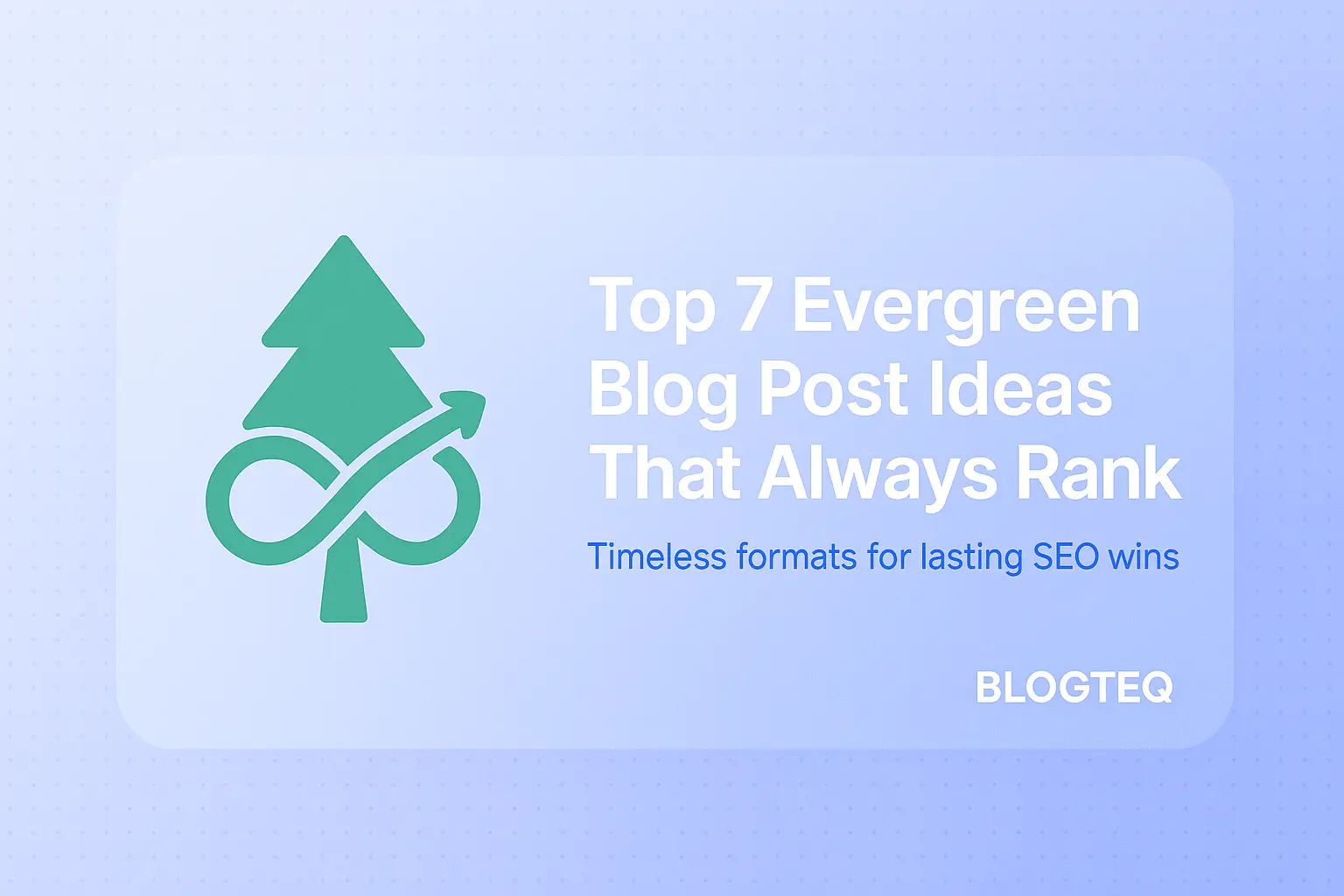Evergreen posts like guides, listicles, explainers, FAQs, glossaries, resource hubs, and case-studies keep attracting traffic for years. Structure with numbered H-tags, concise definitions, data-backed insights, and regular refreshes. Aim for 1.2–2.5 k words, add an answer block, and update quarterly for compounding SEO gains.
Why Evergreen Blog Posts Always Win
Evergreen posts age like fine wine: as Ahrefs reminds us, properly optimised pages deliver “targeted, evergreen, compounding traffic” that stacks month after month. Below you’ll find seven formats that consistently rank—plus optimisation and upkeep tactics drawn from the latest 2025 SEO templates and industry stats.
1. Step-by-Step Guides & Tutorials
Why it works — 72.9% of Google’s top-10 pages are now 3 years old or more, showing depth + durability still win. A well-structured “how-to” becomes the canonical answer novices bookmark for years.
- Word count sweet-spot: 1.2–2.5 k words.
- Template cue: Use numbered H2s for each step, mirroring the Listicle format for scannability.
- Refresh cadence: Check quarterly releases or tool-UI changes and patch screenshots within 48 h.
2. Comprehensive Resource Hubs (Pillar Pages)
Resource hubs consolidate dozens of internal links, creating what SEOs dub “topic authority clusters.” They routinely earn featured snippets because Google sees them as one-stop answers for complex subjects (Backlinko’s on-page SEO guide emphasises exhaustive topical coverage).
Pro tip: Add FAQ schema under each sub-section to boost People-Also-Ask visibility—your internal template’s HowTo/FAQ blocks are perfect for this.
3. Listicles & Round-ups
Data from Noah Kagan’s 100 million-article study shows list posts generate the highest average shares of any format. Longer lists (>2 000 words) triple traffic and quadruple shares compared with short posts, according to Amra & Elma’s 2025 blog-traffic report.
- Structure: Keep each item as a numbered H2 followed by a 2–4 sentence explainer—exactly as your template outlines.
- Quick win: Insert “What is X?” style sub-headings for possible voice-answers.
4. Explainer Articles (Definition Hubs)
Readers (and voice assistants) love plain-language definitions. Backlinko’s voice-search study found Google prefers snippets only 29 words long. Place a crisp definition box after the first paragraph, then dive deeper.
Your in-house explainer template advises question-style headings (“How does X work?”) to improve answer extraction. Follow that, add diagrams, and update metaphors yearly to stay current.
5. Case Studies & Success Stories
B2B buyers rank case studies the most influential content type when evaluating vendors—42% say success stories sway final decisions. Pair narrative storytelling with before/after metrics, as outlined in your Case-Study template’s “Challenge → Strategy → Results” flow.
Refresh cadence: Append an “Updated Results” box every six months to show continued ROI (also boosts recrawl frequency).
6. Glossaries & Definition Hubs
Neil Patel notes evergreen glossaries consistently attract backlinks because definitions never go out of style. Build A-to-Z anchors for jump links and sprinkle examples to hit semantic variants.
SEO boost: Internal-link each term back to deeper resources to strengthen topical clusters, echoing your internal linking recommendations.
7. FAQs & Knowledge-Base Articles
A strong FAQ doesn’t just satisfy users—it slashes workload. Interactive product tours and contextual help articles can cut support tickets by up to 30% during onboarding. Embed FAQ schema and keep answers under 60 words for featured snippets.
Template wisdom: Always end with a concise Q&A section; your size-guide reminds us to include a 50-word answer block for voice/AI picks.
Keeping Evergreen Content Evergreen: 3-Step Refresh Framework
- Quarterly micro-audits (15 min each): run Google Search Console for new query variants and patch wording & alt-text.
- Bi-annual deep refresh: inject fresh statistics, replace outdated screenshots, and re-submit via Indexing API.
- Annual expansion: add a new sub-section or case snippet; long-form posts (>2 000 words) receive 3× more traffic over time.
Voice-Friendly 29-Word Recap
Guides, hubs, listicles, explainers, glossaries, case studies, and FAQs earn shares, links, and leads. Use numbered headings, concise definitions, FAQ schema, and update quarterly for reliable, compounding organic traffic growth.
